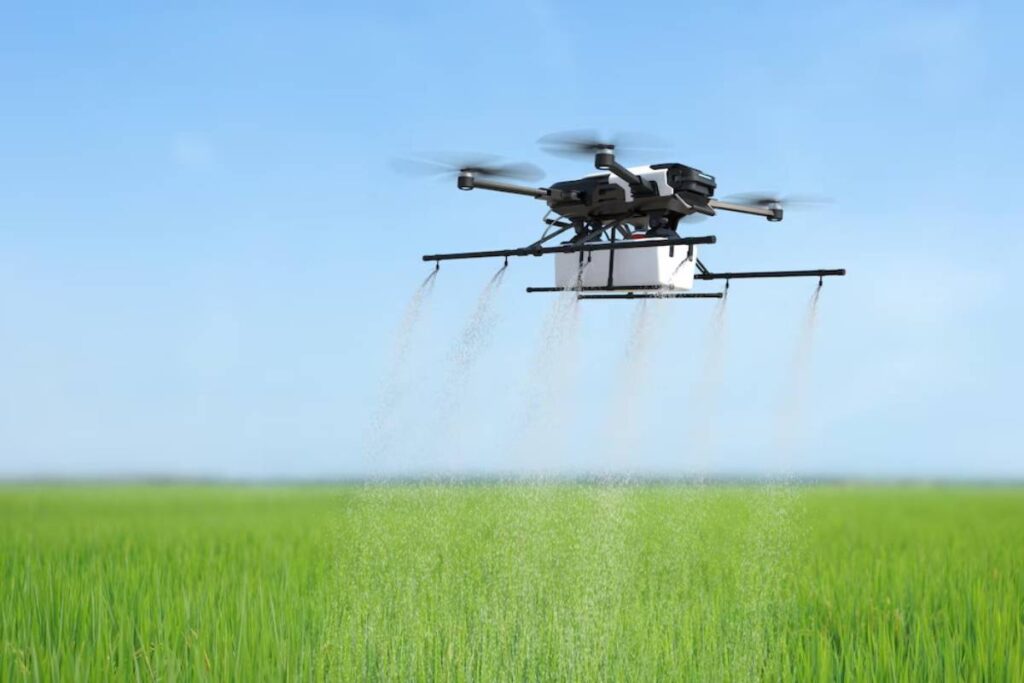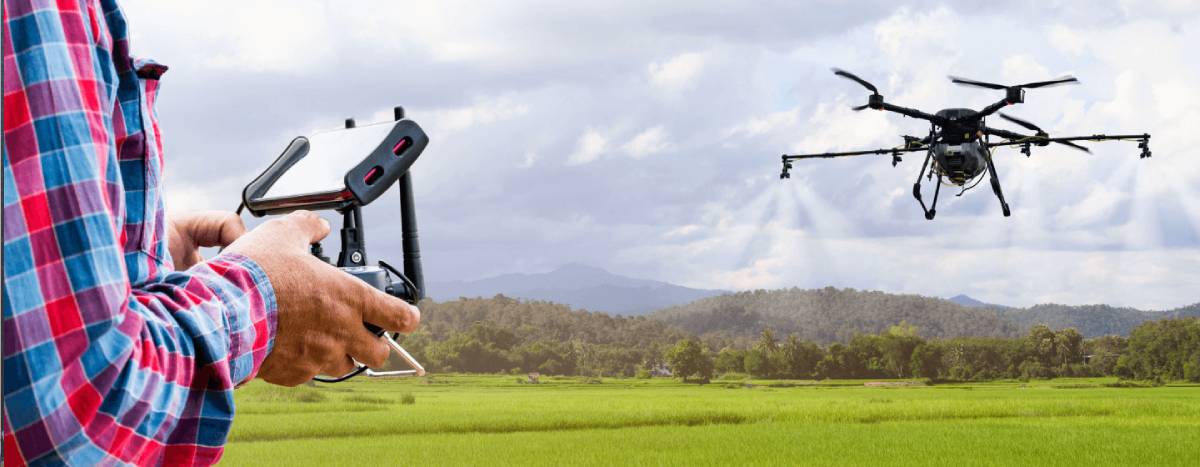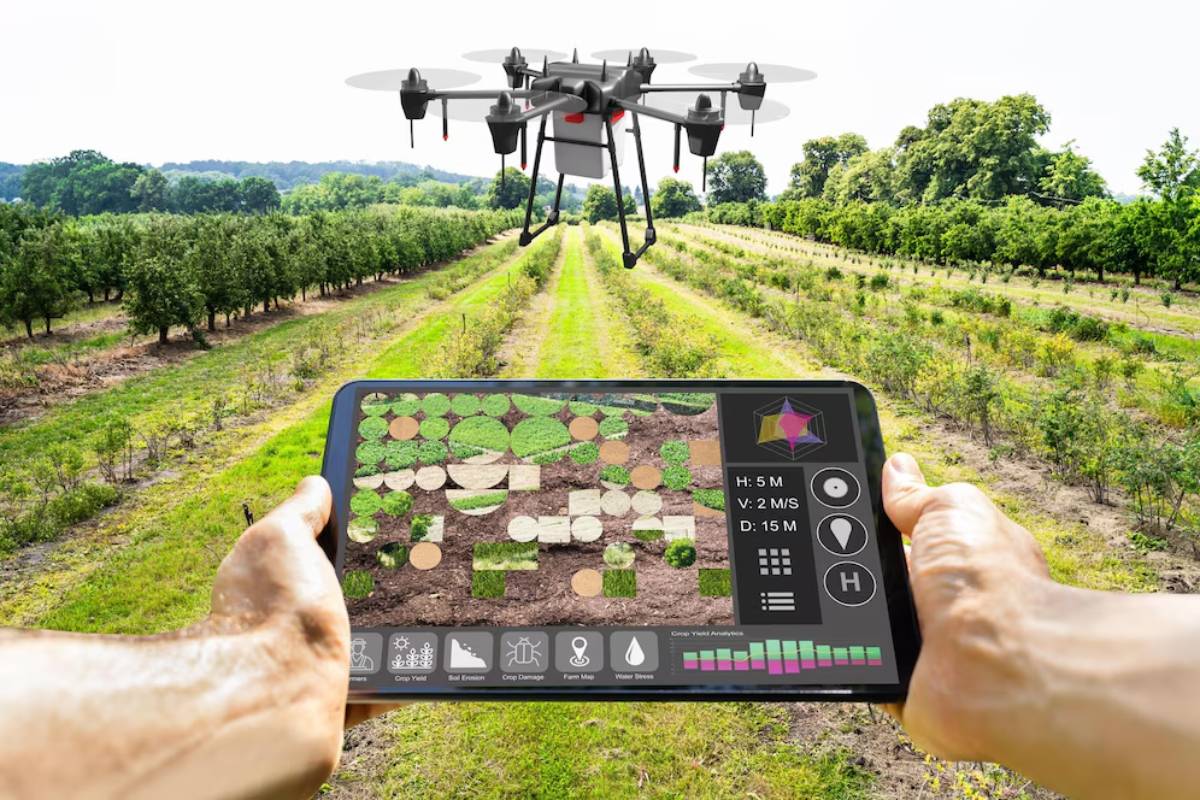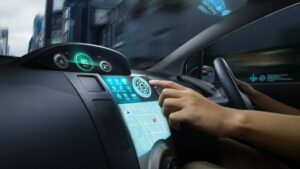The Technology Blog

Agricultural Drones: How They’re Changing Modern Farming
Their use in agriculture is, therefore, just the latest in the tech revolution that has taken place over the recent years. Agricultural drones, once seen in science fiction, are now vital to modern farming. They are changing how farmers manage crops and assess land, bringing new levels of precision and efficiency. In this blog, we will explore how agricultural drones are changing precision farming and transforming how we grow crops.
Agricultural drones, or farming drones, are UAVs designed for farming tasks. Their sophisticated sensors and imaging tools can assist farmers in monitoring crops, checking soil health, and managing resources. Drones are more than a trend; they are essential for sustainable farming. They help with food security and protect the environment.
Key Benefits of Agricultural Drones
Improving Precision Agriculture
Precision describes an approach that utilises theology to provide crops and soil with everything that needs to flourish. Drones are essential here, giving farmers data they had previously been unable to access. With iBy imaging and collecting data above, drones provide farmers with insights to help them make intelligent decisions that minimise waste and increase yields.
Real-life Applications
One of the primary uses of farming drones is crop monitoring. They capture high-resolution images and videos, giving a bird’ s-eye view of fields. This helps identify areas needing attention, especially on large farms, where manual checks are tough. Drones can also find pest infestations, water stress, and nutrient shortages, which helps take quick action.
Additionally, drones with multispectral sensors assess crop health by analysing different wavelengths. This data helps detect diseases early, allowing for targeted treatments. This reduces the need for broad-spectrum pesticides and supports sustainable practices.
Optimising Resource Management
Good resource management is key for sustainable farming, and drones are valuable. They provide detailed maps and data, helping farmers optimise water, fertilisers, and pesticides. This cuts costs and lessens farming’s environmental impact.
Data-backed Insights
Research shows that using drones in precision agriculture can significantly lower input costs. The American Society of Agronomy found that drone technology can reduce nitrogen fertiliser use by 40%. This change doesn’t lower crop yields. This shows how drones can improve resource efficiency and support sustainable farming.

Increasing Operational Efficiency
Time is crucial in farming, and drones help save hours. Traditional crop monitoring is labour-intensive and slow. Drones can cover large areas quickly, giving real-time data for faster decisions.
Real-world Example
Take a large wheat farm in East Anglia. Traditionally, the farmer would spend days inspecting fields. With drones, this task can be done in hours, allowing the farmer to focus on other essential tasks. Using drones saves time, which increases productivity and profits. So, they are a wise choice for today’s farmers.
Additional Expert Tips & Common Mistakes to Avoid

Best Practices for Using Farming Drones
Farmers should follow some best practices to get the most from agricultural drones. First, choose the right drone for specific needs. Consider factors like payload capacity, flight time, and sensor compatibility.
Second, proper training and certification are vital for safe and effective drone use. Farmers should know local regulations and get the needed permits before using drones. Regular maintenance and calibration also ensure optimal performance.
Common Mistakes and Misconceptions
Despite their benefits, using farming drones has challenges. A common mistake is relying only on drone data without combining it with other technologies. Drones provide useful insights. However, they need to be part of a larger precision agriculture plan, which should include soil sensors and GPS technology.
Another misconception is that drones can replace human expertise. While drones improve data collection, interpreting this data needs agricultural knowledge. Farmers should see drones as tools that enhance their skills, not replace them.
Advanced Insights & Expert Recommendations
Leveraging Drone Data for Predictive Analytics
Farmers can use data from agricultural drones for predictive analytics. Studying past data helps us spot problems like pest outbreaks or lousy weather. This allows us to take action before issues arise.
Unique Industry Perspectives
Experts in precision agriculture stress the need for combining drone data with machine learning. This can boost predictive abilities, giving farmers actionable insights. For instance, machine learning models can predict crop yields using drone data, helping farmers improve planting and increase their profits.
Exploring Emerging Technologies
With ongoing tech advancements, the future of agricultural drones looks bright. Self-flying drones, quick data processing, and better imaging will boost drone farming.
Industry Trends
One trend is swarm technology, where multiple drones cover large areas. This can drastically cut data collection time and improve insight accuracy. As technology evolves, farmers can expect even more benefits from using drones.

Taking Flight Toward a Smarter Farming Future
Long story short, agricultural drones are changing the face of farming. They enhance precision agriculture, minimise resource usage, and increase wait times. This real-time data, in turn, assists farmers in making intelligent decisions and encourages sustainable and profitable practices.
Agriculture faces many big challenges, like climate change and a growing population to feed. That’s why using new tools, like farming drones, is essential. Farmers who use these innovations will be ready for future demands and help ensure food security around the world.
Now is the time to consider using drones in your farming. Using Withight technology and skills , farmers can unlock the future of farming. This will help them to tap their potential and allow them to tap into cultural drones.
What are your thoughts on drones used in agriculture? From your vantage point, how is tech shaping the future of farming? Comment down below on your thoughts.









